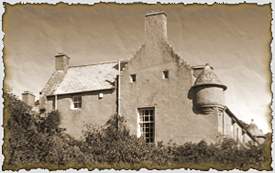Medieval Gambling Games
MEDIEVAL GAMES
Alquerque
x2
Crusader Kings 2 A grand strategy game set in the Middle Ages, Crusader Kings 2 allows the player to control a Medieval dynasty from 1066 to 1453. The main goal is to become as successful as possible and make a name for your house; actions such as the strategic use of war, marriages and assassinations being necessary and even encouraged. Developed and published by Ubisoft back in 2017, For Honor is an action video game set.

Medieval strategy game
This game has very ancient origins. According to archaeological findings, it dates back at least to the time of Pharaoh Ramses I, but was introduced to Spain during Muslim rule and then Alquerque spreads to other European countries. The rules were acquired from the Libro de los juegos commissioned by Alfonso X of Castile in the thirteenth century. It can be considered an ancestor of draughts.
Three in a row
x2
Medieval strategy game
This is a medieval version of Terni Lapilli and also an ancestor of the modern Tic-Tac-Toe. In the Libro de los juegos this game was named: Alqueque de Tres. There are versions in crossed lines and also boxes, but not a circular version .
Mill
x2
Medieval strategy game
Mill is basically a medieval version of the Roman game Tria: the modern Nine Men’s Morris. It is the most recorded game among those engraved on the stones of medieval monuments, especially in sentry posts and in church cloisters. It is played with nine pieces, in fact in the Libro de los juegos it was named Alqueque de Nueve.
The Fox and Geese
x2
Medieval hunting game
This game descends from the ancient Nordic game called Halatafl, derived itself from Hnefatafl, and was mentioned in the Libro de los juegos as De Cercar the Liebre. The aim of the game is different for the two players, like a hunting simulation.
Tablut
x2
Medieval strategy game
Tablut derived from the Viking game Hnefatafl and it was played in Northern Europe during medieval times; it is also known as Linnaeus. The game symbolizes the confrontation between two strongly different sides: the opponents are confronted with unequal weapons, according to unequal rules, so the players have a different set of pieces, movement and goals.
Tables
x2
Medieval race board game
Tables is one of the medieval versions of the Roman Tabula. In the Libro de los juegos there are fifteen variants of this game and it is drawn in various medieval paintings and codes. This game is the most direct ancestor of the modern Backgammon, but it is played in a different and more exciting way.
Table of the Four Seasons
x4
Medieval race board game
This board game is the sole medieval one for four players. In the Libro de los juegos it was described as a game of the tables family. Each player chooses a colour corresponding to a season and takes a place in its sector. This game is an ancestor of the modern backgammon as well, but since it’s for four players, the game has a different strategy and is more exiting.
Medieval Card Games
Table of Astronomy
x7
Gambling In The Middle Ages
Medieval race board game
This board game is the sole medieval one for seven players. In the Libro de los juegos it was described as a game of the tables family. Each player chooses a colour corresponding to a planet and takes a place in its sector. The aim of the game is to win all the items of the other players. This game is also an ancestor of the modern backgammon, but with seven players the game’s strategy is totally different.
The Zara
2+
Medieval Gambling Games
Medieval dice game
The Zara was the most common and popular gambling dice game in the Middle Ages; it was so in vogue to deserve a mention by Dante Alighieri too. The set consists of three wooden handmade dice, pouch and booklet with rules and anecdotes, including the verse of Dante; you can also order the game with a Dice Cup.
Medieval Games and Recreation
Ancient Gambling Games
Medieval society indulged in a number of games and recreation, when the often harsh daily life permitted a break. Chess was widely popular and often a source of gambling entertainment; both in the traditional format and in a simpler version played with dice. Dice were easy to carry and were played in all ranks of society, even among the clergy.
Some games played during the Middle Ages, including bowling, prisoner's base, blind man's bluff (also called hoodman's blind), and simple 'horseplay' are still played today. Checkers were a popular pastime, as was backgammon. Children wrestled, swam, fished and played a game that was a cross between tennis and handball. Medieval knights would incorporate training in recreation, performing gymnastics and running foot races.
Spectators in the Middle Ages were often drawn to cockfights and bullbaiting. The preferred recreation for most adults was drinking in the local tavern. At harvest time, villagers would bob for apples and go on hunts in the surrounding forests, if the castle lord permitted. Hawks were trained to hunt game birds and every medieval castle had a falconer, assigned to train young birds for this sport.
Medieval Christmas games included 'King of the Bean,' where a small bean would be baked inside bread or cake, and the one who found it in their portion would be crowned king of the holiday feast.